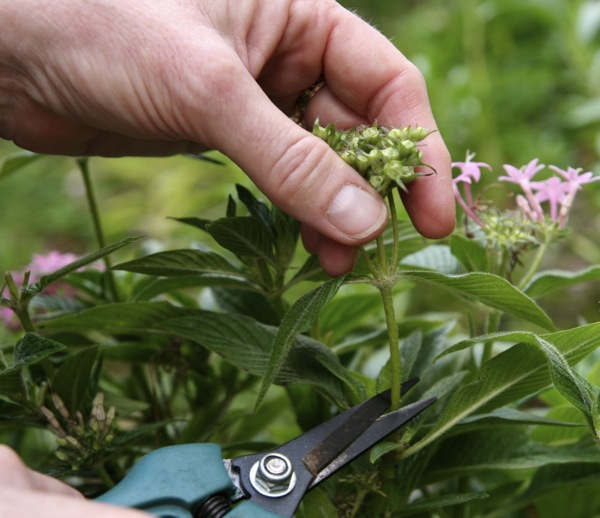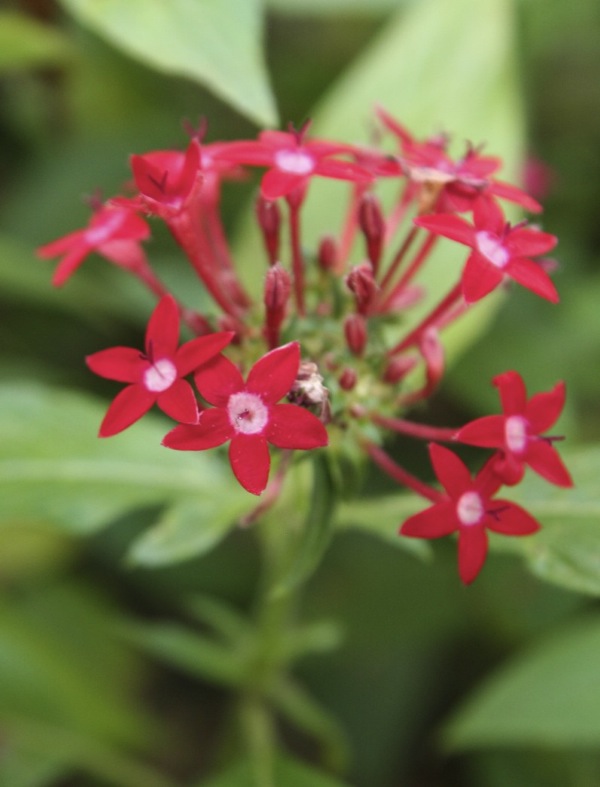I might just be a tiny bit of a pentas fanatic. I’ve been growing them for about 20 years now, in two different gardens and there’s nothing that beats them for flowering display over most of the Sydney year. Pentas is very variable in form, so when you buy it, it’s a bit hard to tell at first whether it’s going to grow to 40cm or 1.5m. Leaf size is no indicator, but I can usually guess now by looking at the internode size – that’s the distance on the stem between where the leaves come out – with longer equalling a bigger plant.

Lower growing pentas form repeated mounding shapes & the colours all blend beautifully
Flowers are an umbel of little star-shaped flowers in all shades of pink, as well as white, lavender and a bi-colour. The tallest and most vigorous form I have is a hot pink, which I suspect is the species.
#gallery-1 {margin: auto;}#gallery-1 .gallery-item {float: left;margin-top: 10px;text-align: center;width: 33%;}#gallery-1 img {border: 2px solid #cfcfcf;}#gallery-1 .gallery-caption {margin-left: 0;}/* see gallery_shortcode() in wp-includes/media.php */ Pale pink pentas
Pale pink pentas Purple pentas – one of the lower growing forms
Purple pentas – one of the lower growing forms White pentas grows taller and has paler leaves
White pentas grows taller and has paler leaves
Pentas will grow in full sun to light, dappled shade and isn’t fussy about soil type as long as it drains OK. It is very drought hardy. When the soil is bone dry and it’s really drought-stressed you might see the flowerheads finally start to droop but by then you’ll know your whole garden is in trouble.
Pruning pentas is always a problem as there’s always flowers on it so it’s hard to make yourself give it a good haircut. But if you do you’ll be rewarded by another flush in only a week or two, so don’t let the bushes get raggedy. I cut back my smaller pentas plants all over with a cordless shear about once a month which gets rid of any dead flower heads, but I prune the taller ones with secateurs, snipping out the spent flowers and taking off maybe 20-30cm down each stem to make the plant more compact.

Use flower snips or secateurs to cut of dead flower heads
Pentas is what’s known as a sub-shrub, which means the bottom part gets woody but the top part stays green and flexible. This means that if you let the tall ones just keep growing upward they’ll soon flop about – a situation you can rescue either with a perennial cradle support, or pruning back more frequently.

Taller growing species pentas in hot pink can flop over if you don’t support it or prune it regularly
Unlike most other perennials though, don’t cut them back in winter when the flowering slows down (although a pentas in Sydney will likely still have a few flowers even through the depths of winter). Pentas do grow better if they’re cut down fairly hard once a year (by about 2/3rds) but don’t do this until you see signs of new leaf burst as the weather warms up in late spring. If you cut them too early they will sulk, or even die back.

Red pentas comes in both taller & lower growing forms
Like most plants that grow quickly and flower all the time, pentas don’t last for more than 3-4 years before they lose vigour. Cuttings taken in late summer strike quite easily, so do a few each year to keep up your supply of this wonderful plant, or get along to your local nursery to pick up a few different colours and sizes.
And the cream de la creme? Pink pentas in Sydney attracts loads of native blue-banded bees!

I mix various colours of pentas with variegated iresine, golden pineapple sage, colourful canna & lilly pilly in the background
